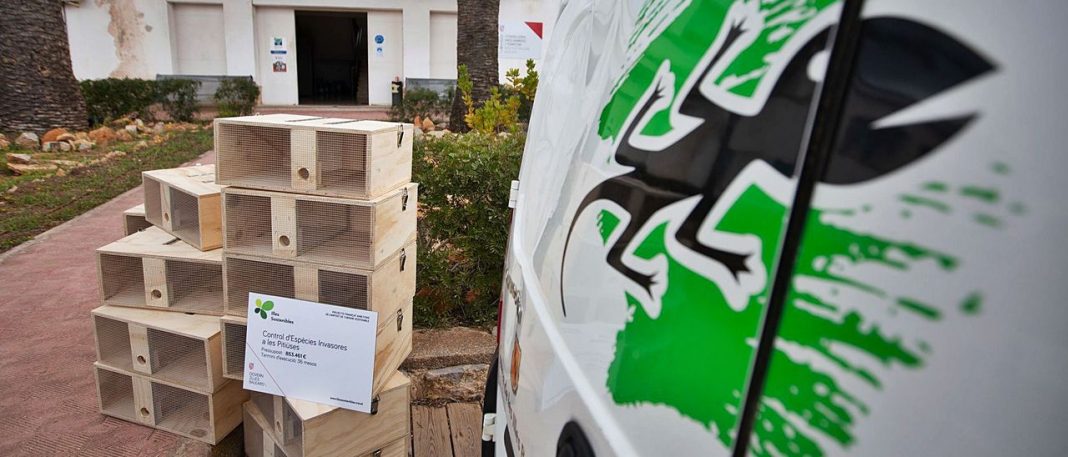The snake control campaign launched this year by the Consortium for the Recovery of Wildlife of the Balearic Islands (Cofib) has so far caught more than 1.100 specimens in Ibiza and 600 in Formentera. These figures include only the reptiles trapped by the technicians of this agency, under the Conselleria de Medio Ambiente, without counting the 500 removed by the volunteer platform SOS Salvem sa Sargantana Pitiusa or the actions of other individuals.
“Trees from outside generate a biodiversity problem not only because of the snakes, but also because of the species that can enter”
This season, Cofib has deployed the most ambitious project since the beginning of the control of this invasive species in 2016, with the installation of more than 1,300 traps between Ibiza and Formentera, compared to the 600 available last year. At the moment, the 884 captures by officials of this organisation during the whole of last year have already been amply surpassed.
However, the coordinator of Cofib’s Fauna Unit, veterinarian Víctor Colomar, regrets that the traps could not be placed at the best time, before the summer. “They arrived a little late at the end of June, July and August, which is not the best time to install them, but it was not possible before,” he says. Similarly, it is important to take into account the difficulty of supplying “such a large volume of mice [to use as bait]”.
However, the veterinarian recalls that this season is only the starting point of “an experiment that has not yet been carried out anywhere so far”. This project has financing of 853,461 euros from the funds of the Sustainable Tourism Tax for the next three years and still includes the installation of another 800 traps.
At the moment, with the specimens trapped this year by Cofib technicians, two cubic meter blocks packed with reptiles have already been sent to Palma. “That’s a lot of snakes that are not going to eat anymore”.
“I am optimistic that snake population densities can be reduced, but it is still too early to say whether it will take two, three or more years or whether the plague can be completely eradicated”. Similarly, he is also firm in assuring that “the reptile will not become extinct”.
Entry of trees
Asked about the entry of trees from the Peninsula without passing a quarantine health control, the origin of this pest in the Pitiusas, Colomar warns that “they are a potential source of entry of many species”. Beyond the horseshoe snakes, which have been breeding on the island for years, “can cause the arrival of green snakes, other reptiles or insects and is very worrying,” he says.
Satisfaction with the results of pest control on Formentera
The reptiles caught in the traps on this island are increasingly smaller.
Although the project of the Consorci de Recuperació de la Fauna Silvestre de les Illes Balears (Cofib) for the control of the snake plague has only just started up, in Formentera we are already obtaining “indications that give a good impression of the situation.
The island has the advantage that the snake plague is concentrated in the same area, in the Mola. Throughout this season, Cofib technicians have so far captured 600 specimens on Formentera , a significantly higher proportion than the 1,100 on Ibiza.
“Although there is such a large volume of snakes on Formentera, we have signs that control of the plague is improving, such as the fact that the snakes caught are getting smaller and smaller”, stresses the coordinator of the Cofib’s Fauna Unit, Víctor Colomar.
Similarly, there were times when the traps deployed in Formentera came to catch the reptiles “ three by three or four by four , while now only one is caught”. At the moment, in the smallest of the Pitiusas there are about 250 traps of the Cofib.
“If in Formentera we have indications that the situation is improving, may be that in Ibiza we go the same way ,” said Colomar. In this sense, he stressed that these campaigns give results in controlling the pressure on the populations, although at the moment it cannot be guaranteed that the pest can be eradicated. “They are like the auxiliary strips against fires that each year makes the Ibanat,” he compared.
For the full article, please visit Diario de Ibiza website here.


